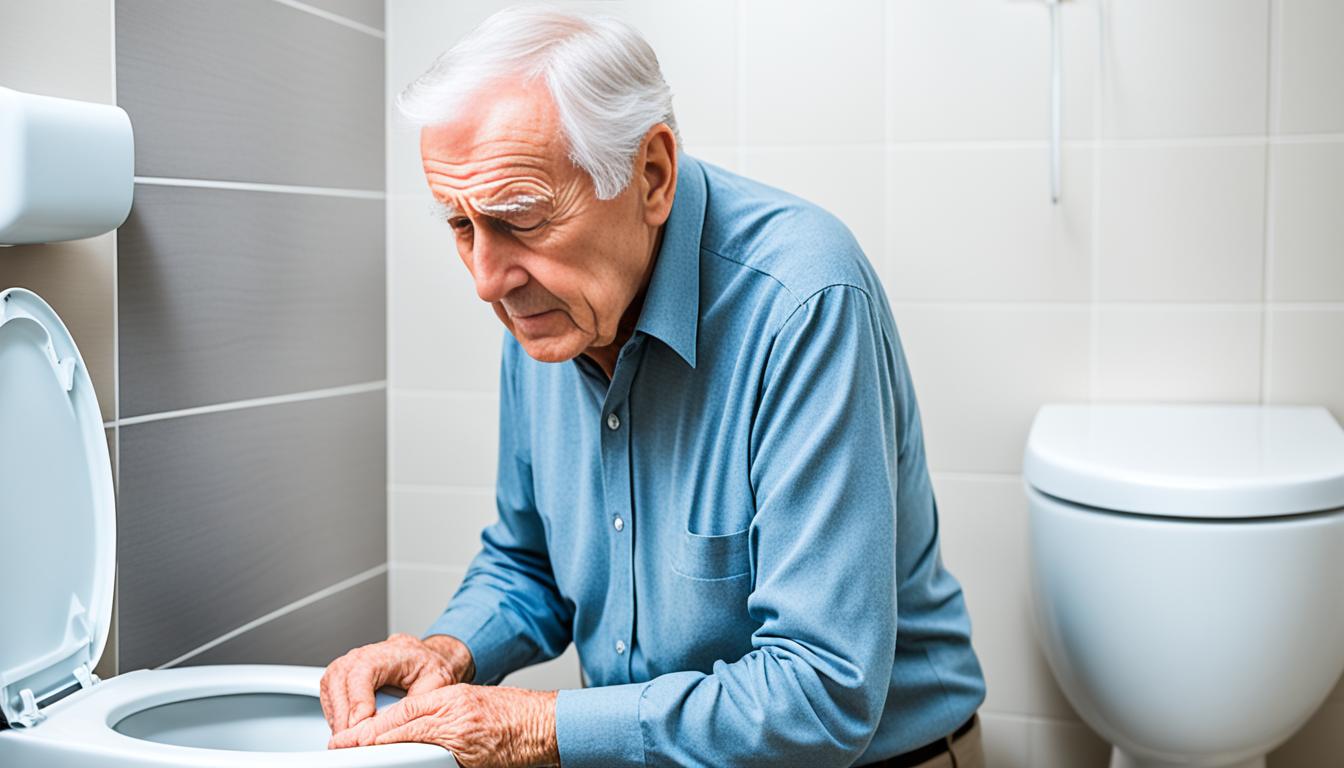Urinary tract infections (UTIs) can have atypical presentations, especially in the elderly population. While most people associate UTIs with symptoms like burning sensation during urination or frequent urge to urinate, these typical signs may not be the first indications in older adults. Instead, UTIs in the elderly often manifest as infection-induced delirium or confusion, which can be mistaken for other conditions.
When an elderly person experiences delirium without a clear cause, it is crucial to consider the possibility of a UTI. This condition, known as urinary tract infection-induced delirium, can be the first sign of an underlying urine infection. Recognizing this atypical presentation is essential for timely diagnosis and appropriate treatment.
In this article, we will delve into the connection between UTIs and delirium in the elderly. By understanding the unique characteristics and challenges of UTIs in geriatric patients, we can improve early detection and promote better care for this vulnerable population.
What is Commonly the First Sign of a Urinary Tract Infection in the Elderly?
Urinary tract infections (UTIs) are common in the elderly population, often caused by various age-related risk factors. These risk factors can include malnutrition, diabetes, bladder control issues, prolonged hospitalizations, and unhygienic living conditions.
UTIs in the elderly may present with atypical symptoms that differ from those experienced by younger individuals. Common signs of UTIs in seniors can include delirium, confusion, falls, and urinary incontinence. These symptoms are important to recognize as they can be easily mistaken for other conditions or attributed to aging.
Early detection and treatment of UTIs in older adults are vital to prevent complications and improve health outcomes. By promptly identifying and managing UTIs, healthcare providers can help alleviate discomfort and reduce the risk of serious complications.
Key Risk Factors for UTIs in the Elderly:
- Malnutrition
- Diabetes
- Bladder control issues
- Prolonged hospitalizations
- Unhygienic living conditions
By addressing these risk factors and implementing preventive measures, such as maintaining proper hygiene and addressing underlying health conditions, the incidence of UTIs in the elderly population can be reduced.

| Signs of UTI in Seniors | Elderly UTI Symptoms | UTI Early Signs in Older Adults |
|---|---|---|
| Delirium | Confusion | Frequent falls |
| Urinary incontinence | Disorientation | Changes in behavior |
| Poor appetite | Agitation | Urinary urgency or frequency |
| Drowsiness | Feverish symptoms without a fever | Cloudy or foul-smelling urine |
Understanding and recognizing these signs and symptoms is crucial to ensure early detection and appropriate management of UTIs in older adults.
Recognizing the Symptoms of Urinary Tract Infections in the Elderly
Urinary tract infections (UTIs) in the elderly can present with subtle symptoms that may differ from those typically seen in younger individuals. Recognizing these symptoms is crucial for early detection and proper management of UTIs in older adults.
Common UTI symptoms in the elderly include:
- Frequent falls
- Confusion
- Dizziness
- Urinary incontinence
- Poor appetite
- Fatigue
These symptoms are often mistakenly attributed to the effects of aging or other underlying health conditions. As a result, diagnosing UTIs in older adults can be challenging.
It is essential for healthcare providers to be aware of these atypical symptoms and conduct appropriate testing to detect UTIs in older adults. By understanding the warning signs and considering the possibility of a UTI, healthcare providers can ensure timely diagnosis and appropriate treatment.

| Common UTI Symptoms | Elderly UTI Diagnosis | UTI Detection in Older Adults |
|---|---|---|
| Frequent falls | Proper evaluation of symptoms | Appropriate testing |
| Confusion | Atypical presentation in older adults | Early detection |
| Dizziness | Recognizing subtle symptoms | Timely diagnosis |
| Urinary incontinence | Considering UTI as a potential cause | Proper treatment |
| Poor appetite | Challenging diagnosis | Prevention of complications |
| Fatigue | Appropriate management | Improved outcomes |
Risk Factors for Urinary Tract Infections in the Elderly
Several factors contribute to an increased vulnerability of the elderly population to urinary tract infections (UTIs). It’s important to understand these risk factors to effectively identify and prevent UTIs in older adults.
- Underlying Health Conditions: Elderly individuals with existing health conditions like diabetes are more susceptible to UTIs.
- Use of Catheters: The presence of a urinary catheter increases the risk of UTIs in seniors.
- Incontinence: Older adults who experience urinary incontinence are at a higher risk of developing UTIs.
- Immobility: Lack of mobility, such as being bedridden or confined to a wheelchair, can contribute to the development of UTIs.
- Kidney Stones: The presence of kidney stones can predispose the elderly to UTIs.
- Dehydration: Dehydration, which is common in older adults, can increase the risk of UTIs.
- Menopause: Women who have gone through menopause are more susceptible to UTIs.
By recognizing these risk factors and implementing appropriate preventive measures, healthcare providers can better protect the elderly population from urinary tract infections.
Diagnosis and Treatment of Urinary Tract Infections in the Elderly
Diagnosing urinary tract infections (UTIs) in the elderly requires a comprehensive evaluation, considering the atypical symptoms and risk factors that may be present. Healthcare providers play a crucial role in identifying and treating UTIs in older adults.
One of the first steps in diagnosing a UTI is to carefully evaluate the symptoms that the elderly person is experiencing. While some common UTI symptoms, such as pain or a burning sensation during urination, may be present, it’s important to note that older individuals may exhibit atypical signs. These signs may include confusion, increased falls, decreased appetite, or urinary incontinence. Recognizing these diverse symptoms can help healthcare providers make an accurate diagnosis.
Once the symptoms are assessed, healthcare providers may perform urinalysis or other laboratory tests to confirm the presence of a UTI. Urinalysis involves examining a urine sample for the presence of bacteria, blood, or other abnormalities. In some cases, a urine culture might be performed to identify the specific bacteria causing the infection and determine the most effective antibiotic treatment.
The treatment of UTIs in the elderly typically involves a course of antibiotics. The specific antibiotic prescribed will depend on the type of bacteria causing the infection and any underlying health conditions that need to be considered. It is important for elderly patients to follow the prescribed treatment regimen and complete the full course of antibiotics to ensure effective eradication of the infection.
Timely diagnosis and appropriate treatment are essential in managing UTIs in the elderly. If left untreated, UTIs can lead to serious complications, such as kidney disease or sepsis. Healthcare providers should also closely monitor elderly patients during and after treatment to ensure that the infection is fully resolved and to prevent recurrent infections.

By understanding the specific challenges and symptoms associated with UTIs in the elderly, healthcare providers can provide the necessary care and support to promote the well-being and recovery of older adults.
Conclusion
Urinary tract infections (UTIs) in the elderly can be challenging to diagnose due to their atypical symptoms. Healthcare providers need to be aware of these symptoms and the risk factors associated with UTIs in older adults to ensure prompt detection and treatment. Early intervention is crucial in preventing complications and improving outcomes for this vulnerable population.
By understanding the unique characteristics of UTIs in the elderly, healthcare providers can deliver effective care and support to older adults experiencing UTIs. Regular monitoring, thorough evaluations, and appropriate testing can help identify UTIs in older adults, even when symptoms may not align with the typical signs seen in younger individuals. Identifying and treating UTIs early can significantly improve the well-being and quality of life of elderly patients.
It is essential for healthcare providers to consider UTIs when older adults present with symptoms such as confusion, falls, urinary incontinence, poor appetite, and fatigue. These symptoms should not be dismissed as normal signs of aging but should instead prompt further investigation. By addressing UTIs promptly and implementing appropriate treatment strategies, healthcare providers can help reduce the burden of UTIs in the elderly population and promote healthier aging.




